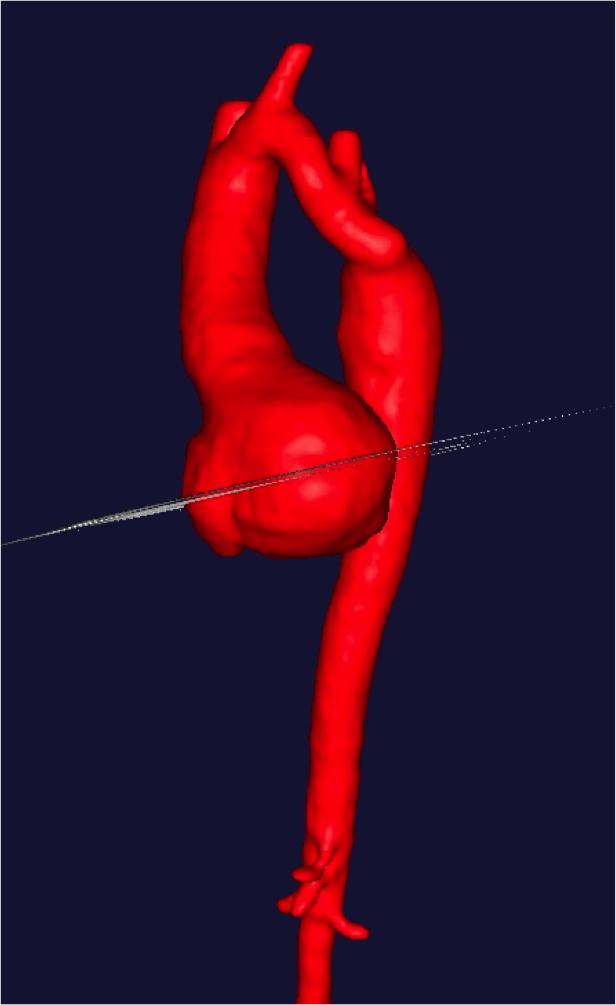The Root of the Matter - Disease of the Aortic Root
Welcome to another edition of “As the Aorta Grows and Rips”…

Do you see anything wrong with this CAT scan image of a patient’s aorta?
This patient has a 6cm aortic root aneurysm.
It appears as the bulge in the ascending aorta.

For comparison, here is a normal aortic root.
We have discussed the aortic root anatomy which you can check out here.
As you can recall, the coronary arteries (both left and right) exit the aorta within the aortic root. The aortic root extends from the aortic valve to the sinotubular junction, which is the anatomic transition into the ascending aorta.
The distance from the aortic valve annulus to the sinotubular junction varies among patients and ranges from 1.5 to 3.5 cm.
The aortic root has a natural “bowing out” called the sinuses of Valsalva. There is a natural dilation of the aortic root which facilitates blood to exit the aortic valve with systolic ejection and creates a turbulent blood flow pattern which allows blood to enter the coronary arteries.
These sinuses (3 in total to correspond with the 3 aortic valve leaflets) can weaken and expand over time. The wall stress on the aortic tissue in this region is enormous and quite different than in other parts of the aorta, primarily due to the massive force of blood being ejected from the left ventricle of the heart.
The aortic tissue in the aortic root can be genetically abnormal from birth (most commonly in patients with bicuspid aortic valve disease) and also in patients with connective tissue disorders such as Marfans Syndrome.
A lot of work is being done to understand the genetics of patients with aortic diseases. We have only uncovered a fraction of the abnormal genes related to aortic root aneurysms and labs such as the John Ritter Research Program in Aortic and Vascular Disease have described 5 specific genes.
According to their research:
There are five genes that are known to cause FTAAD: ACTA2,_ **responsible for 10-15% of FTAAD**, MYH11 **(1%)**, FBN1 **(rare)**, TGFBR1 **(1%)**, _and _TGFBR2 _(2.5%). Mutations in any one of these genes cause a predisposition to develop TAAD to be inherited in a family.
If you or a family member have and aortic aneurysm or aortic dissection, I strongly suggest checking out their website to get more information.
What to do
The patient with the abnormal CAT scan above is pretty typical for a genetic disorder. He has not had genetic testing yet. By the way, he is young (age less than 30 years), so the presentation of an aneurysm for him is most certainly an inherited genetic disorder.
Without a doubt this patient, like many others with an aortic root diameter greater than 5cm (keep reading) will need treatment.
The only currently available treatment for this disorder is open heart surgery. There are no medicines that can shrink the problem and no conventional endovascular/stent options.
There are three fundamental types of procedures:
-
One is called the Bentall Procedure. This is the classic procedure where the ascending aorta, aortic root and aortic valve are removed and a medical device involving an aortic valve combined with a synthetic tube are used to reconstruct the aortic root.
-
The second is the Ross procedure. This involves removing the pulmonary artery and replacing the aortic root with the patient’s own pulmonic valve and then replacing the pulmonic valve with a homograft (valve from a cadaver).
-
The third approach is to spare the aortic valve (called valve-sparring root replacement) and replace the aortic root and ascending aorta with a synthetic graft.
Each of these three different approaches have defined indications based on subtle anatomic variables and patient and surgeon preferences.
We will discuss these different approaches in a future approach in more detail along with data and outcomes.
Summary
The aortic root is a complex anatomic area. Aneurysms (or dissections) in this area can be instantly life-threatening and require treatment.
There are genetic factors related to diseases in the aortic root. Patients with an aortic root problem should have direct family members screened with a CAT scan and echocardiogram.
There are several surgical options, all of which require open heart surgery.
Question
Have you are a family member developed an aortic root problem? Share your story to help others learn about this challenging medical and surgical problem.
Was this post informative?
Subscribe to my newsletter to learn more about the aorta, its diseases, and how to treat them.
Comments
Share your thoughts below — I try to get back to as many comments as possible.
